James Jebusa Shannon - Gifted Gallery
- Lilium

- May 3, 2023
- 3 min read

Sir James Jebusa Shannon RA, born 3 February 1862, was an Anglo-American artist.

Shannon was born in Auburn, New York, to Irish parents, who relocated to Canada by the time he was eight. When he was sixteen, he went to England, where he studied at South Kensington, and after three years won the gold medal for figure painting. At South Kensington he was fortunate enough to become a pupil of Edward Poynter, who encouraged him and promoted his career.
His portrait of the Hon. Horatia Stopford, one of the queen's maids of honour, attracted attention at the Royal Academy in 1881, and in 1887 his portrait of Henry Vigne in hunting costume was one of the successes of the exhibition, subsequently securing medals for the artist at Paris, Berlin, and Vienna.

After this success Shannon decided to settle permanently in England and took a studio in Manresa Road, Chelsea, alongside several other up-and-coming artists who together founded the New English Art Club in 1886. He soon became one of the leading portrait painters in London.
More success followed: in 1888 he was taken up by Violet Manners, Marchioness of Granby, who commissioned several portraits of herself and her children, as well as recommending him to her friends among the influential set known as The Souls.
In 1891 he became a founder member of the Society of Portrait Painters and it was at this point, in 1892, that he claimed his place at the centre of the artistic community of the Holland Park Circle by acquiring the plot of land in Holland Park Road, living next door to Leighton House, the home of fellow artist Lord Leighton. Here he lived with his wife and daughter, working hard as numerous commissions flowed in, as well as entertaining generously: "Like Leighton, Prinsep and Fildes, Shannon was a consummate host; his sociable personality undoubtedly led to lucrative portrait commissions". His friends considered him to be the life and soul of any party.

The architect of Shannon’s house, W.E.F Brown, provided a spacious and luxurious building in two parts, one a lofty studio, the other purely domestic, in a Dutch revival style. His daughter Kitty wrote:

"The house when finished was beautiful and amusing. It was a long red-brick one (my father had all the bricks made especially for him, the right colour and very small), set back so that it had a garden in front as well as at the back. It had two front doors, one for my mother and one for my father; they were very modern, those two! One day there were some friends to tea with us in the garden who were looking at and admiring the house. They suddenly said: "What a pity you have to share this garden with the people next door. Who lives there? And my father said: "It’s not so bad. That is my wife’s house!'"
"What an atmosphere it had, as one went from one lovely room to another, the whole length of the house from the old pickled oak drawing-room, the dining-room, also panelled and painted a wonderful dark blue which, when the sun slanted in through the open window, lit up into a burning blue; the ceiling wood and beamed, and painted dark blue; old Dutch furniture and old blue delft china; an old Dutch ship hanging from the ceiling; bright flowers in the window, through which one seemed to see a forest as one looked over the gardens of Leighton and Prinsep.... Then up the oak staircase to my father’s studio. What a room! Enormous and lofty, with his pictures, old furniture and tapestry. The restfulness of it! I simply can’t describe it. It seemed to me the centre of the Universe."
His work began to attract more interest. He remained a portraitist and by staying in this line, like his better- known contemporary John Singer Sargent, he became a favourite portrait artist of the English upper classes.
He also travelled to America several times to work in Boston, Newport or New York. Many of his portraits - some of ladies in swirling satin garments emulating Sargent’s style, others in a more impressionistic manner - remain with the families which commissioned them. His picture The Flower Girl was bought in 1901 for the national collection at the Tate.

In 1918 Shannon’s health declined, painting his final self portrait in 1919. He was knighted in 1922. James Jebusa Shannon died a year later, on the 6 March 1923, aged 61.
Shannon has paintings in the collection of several British institutions including Sheffield, Derby Art Gallery, Glasgow Museum and Bradford Museum. A memorial to him lies in St James's Church, Piccadilly.






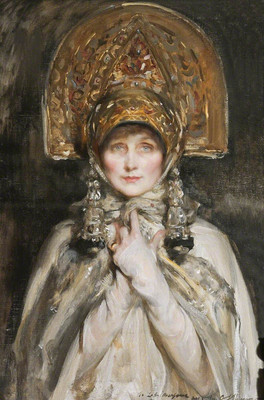

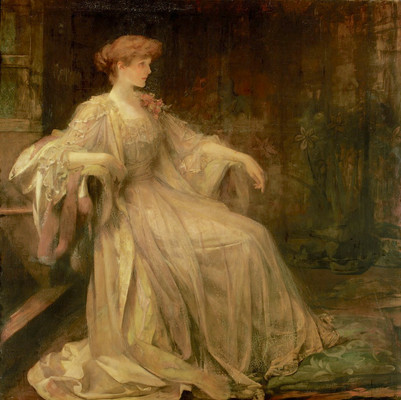

























































































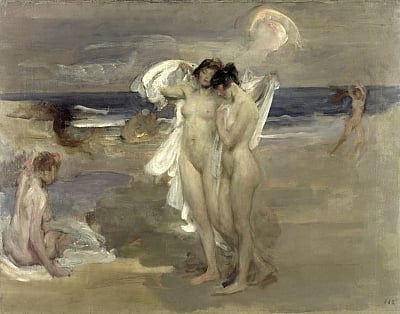

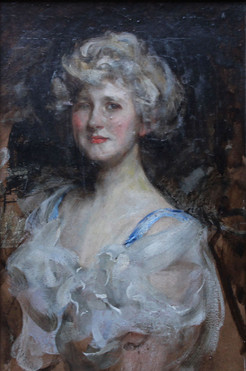











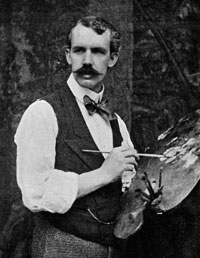































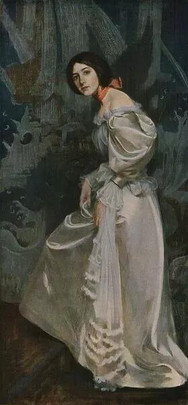











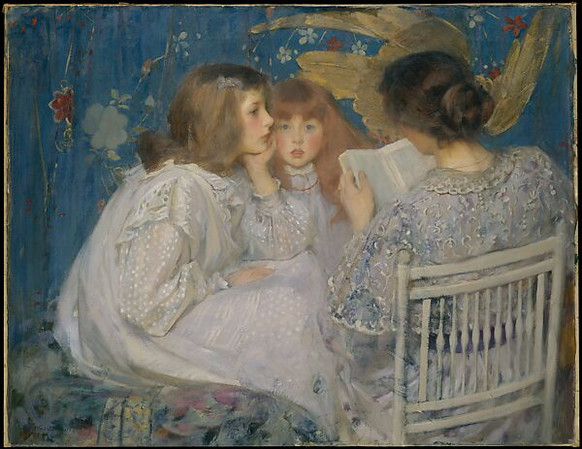





Comments